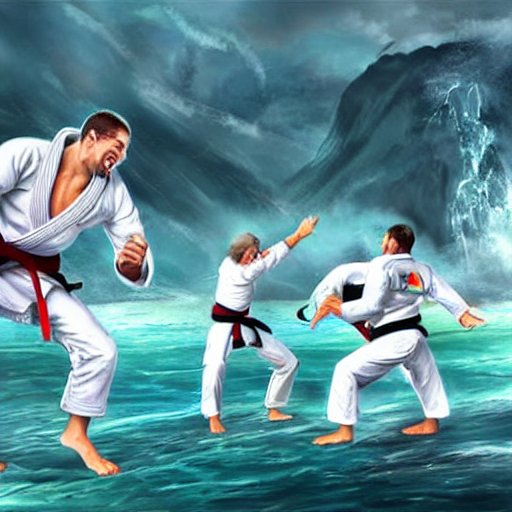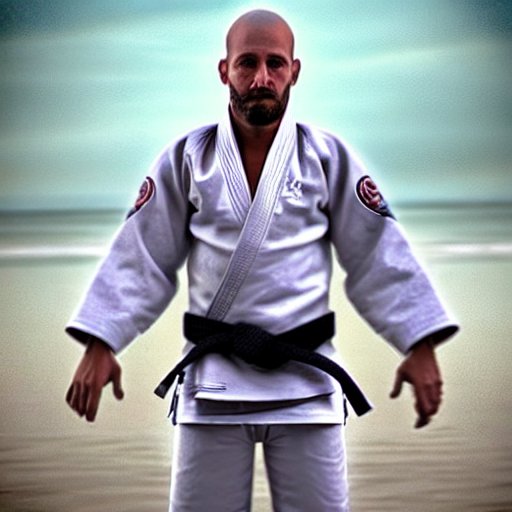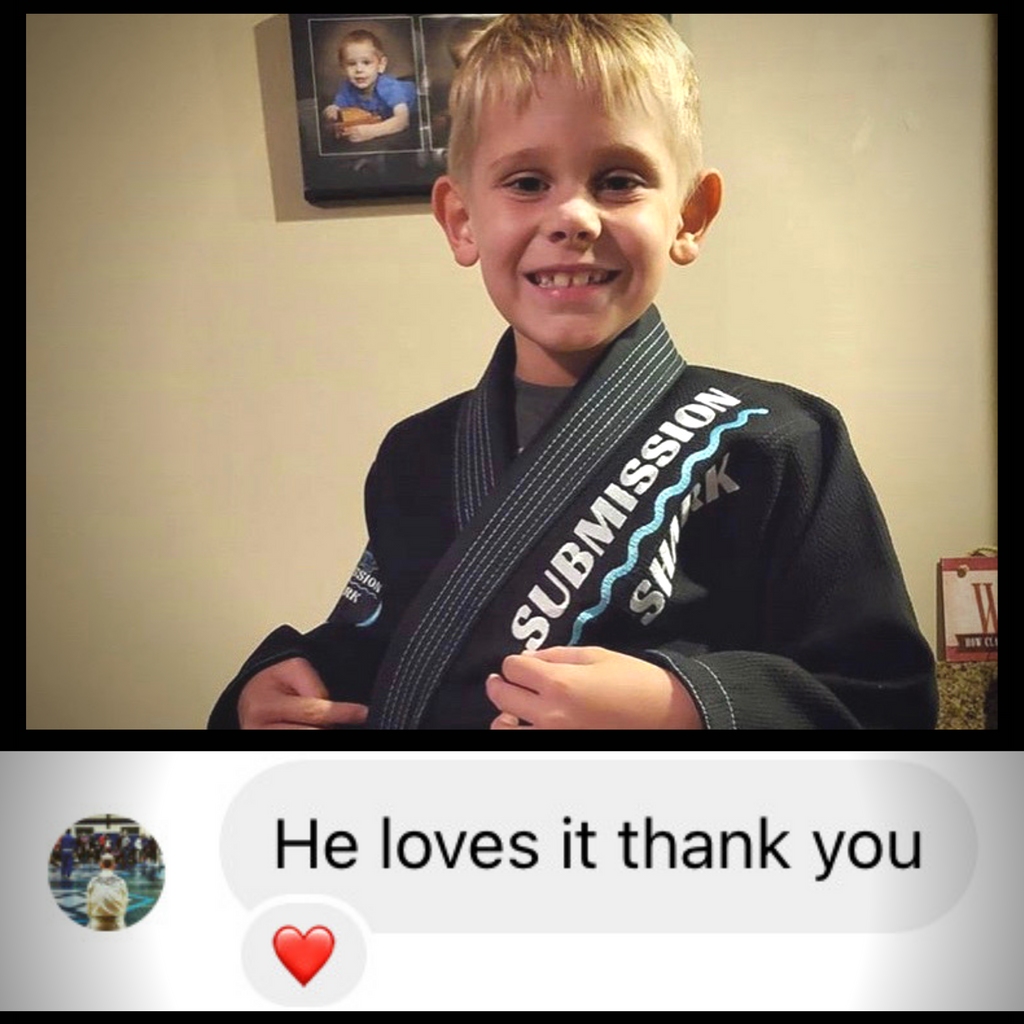7 Benefits of Training With Different Practitioners
If you're into Brazilian Jiu-Jitsu, you know that rolling with different training partners is essential to improve your skills.

Repeatedly training with the same person can be helpful but can also create a plateau in your development. By training with different practitioners, you expose yourself to new challenges and experiences that can help you become a more well-rounded and adaptable fighter.
One of the most significant benefits of rolling with different partners is learning to apply techniques against various body types and resisting styles. You'll encounter individuals with different:
- Strengths
- Weaknesses
- Body types; forcing you to adjust your approach accordingly.
This is particularly important regarding resisting styles - some people may be more explosive, while others may be more systematic. Adapting to these styles will make you a more versatile and effective fighter.

In this article, we'll explore the benefits of rolling with different practitioners in more detail.
We'll talk about how exposure to new strategies and tactics can improve your overall game, how different training partners can provide valuable feedback, and how rolling with different practitioners can help build relationships and foster a sense of camaraderie within the BJJ community. So, let's get started!
The Importance of Training with a Variety of Partners
Training with various partners is an essential aspect of Brazilian Jiu-Jitsu (BJJ) that cannot be overlooked. Not only does it help you stay on track with your routine, but it also introduces you to a diverse range of body types and skill levels. Plus, let's face it, having a training partner can be a great motivator to get off the couch and hit the gym.
Benefit #1 - Understanding How To Apply Techniques To Different Physiques and Body Types
As a BJJ practitioner, it's crucial to understand how to apply techniques to different body types. This means recognizing that only some people move or react the same way and that what works for one person might not work for another. Understanding your body type is a great place to start.
There are generally three body types:
- Ectomorphs
- Mesomorphs
- Endomorphs
Ectomorphs are typically thin and lean, with a high metabolism and difficulty gaining weight. Mesomorphs are more muscular and athletic, with a balanced metabolism and the ability to gain and lose weight relatively easily. Endomorphs are usually larger and round, with a slower metabolism and a tendency to gain weight easily.
Knowing your body type can help you tailor your training and technique application.

Example: An ectomorph might focus on developing strength and power, while a mesomorph might focus on refining technique and speed. Endomorphs might focus on developing endurance and stamina to support their larger frame.
Understanding body types is one aspect of being a well-rounded BJJ practitioner. It's important to train with various partners to gain experience and adaptability. But by understanding your body type, you can develop a training approach best suited for you.
Benefit #2 - Practice Against Height and Weight Disparities
Height and weight disparities between BJJ partners are also common. BJJ is effective for all body sizes and attracts practitioners of all shapes and sizes. Training with these partners will help you develop a better understanding of how to apply techniques against opponents that may be taller, shorter, heavier, or lighter than you.

By training with partners of different heights and weights, you can gain experience in how to control position and transition against various opponents. You'll also learn how to adjust your technique to the specific body type and size of your opponent, which is a valuable skill in any form of martial arts.

Benefit #3 - Learning How To Adapt To Different Resisting Styles
One of the biggest challenges is adapting to different resisting styles. Everyone has their unique approach to rolling, and being able to adjust your techniques to suit their style is essential for success on the mat.
Conforming with other practitioners about their rolling style is one way to improve your ability to adapt. Ask them questions about what works for them and what doesn't, and try to understand the thought process behind their movements. This will give you a better understanding of countering their techniques and adapting your approach.

Another effective method is to summarize what you've learned in your own words. This can be done through oral summaries or by recording yourself reviewing the material and listening to it with a partner. Putting what you've learned into your own words will give you a deeper understanding of the material and better apply it to different resisting styles.
Ultimately, learning how to adapt takes time and practice. In the first few months of training, your body will adapt to the movements needed for BJJ. But it's important to remain open-minded and receptive to new techniques and styles, as this will ultimately help you become a well-rounded and successful BJJ practitioner.
Benefit #4 - Different Tempos of Intensity
Rhythm is a commonly overlooked component of BJJ. Different tempos of intensity can be used to apply techniques, such as using a slow or fast technique depending on the situation. Some of your training partners may be dynamic and sneaky with their attacks while others are more methodical and patient.

It's important to understand the different tempos of intensity and to be able to adjust accordingly. Be aware of your own body movements and the rhythm you use when executing techniques. Then, you'll be better prepared to handle different types of opponents and their varying tempos of intensity.
Benefit #5 - Exposure To New Strategies and Tactics
Similarly to the differences in rhythm, exposing yourself to new strategies and tactics can help you become a better BJJ practitioner. There is no one-size-fits-all approach to BJJ, and being open to different approaches can help you gain a greater understanding of the techniques.
There are many resources available that can help you understand the different strategies for BJJ such as the two below:
- 10 Most Common Strategies for Brazilian Jiu-Jitsu
- Secret Competition Strategies In BJJ Tournaments (Unlock Success)
However, experience can be your best teacher. Open mats are a great opportunity to learn from different practitioners and get exposure to new tactics. Not only will you be exposed to novel strategies being used against you, but you can also learn from your own experimentation.

Don’t be afraid to try new things when rolling and observe how they work against different opponents. This will give you a better understanding of the various strategies and tactics used in Brazilian Jiu-Jitsu.
Benefit #6 - Receiving Valuable Feedback From Different Skill Levels
Feedback is like the seasoning that adds flavor to the learning process. The key ingredient makes the difference between a mediocre performance and an excellent one. Whether you're a seasoned pro or a newbie in BJJ, feedback is essential to improve your game.
But feedback isn't just about receiving praise or criticism from your coach. It's about receiving input from various sources, including your training partners.
Someone with more experience may notice errors or provide helpful tips that someone with less experience may not. And sometimes, a fresh set of eyes can help you identify mistakes you didn't even know you were making.

For example, when rolling with a white belt, they might not be able to identify exactly what you did wrong. But a purple belt might be kind enough to help you with your technique because they are confident in their competence on the mats.
Feel free to ask for feedback and suggestions from training partners at all experience levels. The key is to be receptive to feedback and use it as an opportunity to grow and improve your skills.
Improving Overall Game Through Diverse Training (Summary)
In Brazilian Jiu-Jitsu, training with various partners can help improve your overall game. By rolling with different practitioners, you're exposed to new strategies and tactics, which can help you become a more well-rounded grappler.
Just like in any team or organization, diversity brings multiple perspectives. You'll learn to apply techniques against various body types and resisting styles with various training partners. This means you'll be better prepared for any opponent.
To make the most of your training sessions, it's important to stay goal-oriented and consistent. Set specific goals for yourself and work towards them consistently.

Asking for feedback and advice from your training partners. They may see mistakes you're unaware of and provide valuable insights into areas where you can improve.
Be bold and ask your instructor questions and try new things. Learning from different perspectives will only enhance your understanding and mastery of the art.
In summary, diverse training can help you become a more well-rounded grappler and lead to more thoroughly vetted results. So, be open to training with different practitioners, stay goal-oriented and consistent, and take advantage of the opportunities to learn and improve.
Bonus Benefit - Building Relationships Within The BJJ Community
Beyond the technical aspects of Brazilian Jiu-Jitsu, one of the bonuses is the community that comes with it. The BJJ community is a great place to meet new people and build relationships with a wide range of practitioners.

Building relationships within the BJJ community is not just about mastering techniques but also about building trust, loyalty, and dedication with your coach and peers. Here are some tips on how to create a positive and effective relationship with your coach:
- Avoid getting too personal: Remember that your coach is your teacher, so it's important to maintain professionalism and respect. Save the personal stories for outside the gym.
- Be mindful: Building a good relationship is about being mindful of the group. Listen to your peers, lend a hand when necessary, and exchange proper etiquette. Avoid getting too personal with your peers during class time. Sure, lifelong friendships frequently happen in BJJ, but save it for after class.
- Pay attention: It's important to always show your coach and peers respect by paying attention, listening to instructions and advice, and following through with what you are taught. It can happen to have your focus linger somewhere else during a technique, but it's important to stay engaged and be open to learning.
- Be positive: Do your best to keep a positive attitude and be supportive of your peers. BJJ is an individual sport, but it also requires teamwork and collaboration. Building a positive environment can create a strong bond that can last for a long time.
- Be proactive: Show your commitment to the sport by taking initiative and being proactive. Clean up after yourself, help your peers when they need it and offer to roll with new students.
- There is an art to being a good student: Humility, listening, and having an open mind are crucial qualities for success in BJJ. Don't be afraid to ask for help; take the time to master the drills.
- The truth will free you: Honesty is key to building a strong relationship with your coach. Tell them when you're having a bad day or struggling with a technique. Communication is vital for success in any situation.
Following these tips can create a positive and productive relationship with your coach and peers, leading to growth and success on and off the mats. Remember, it's not just about the techniques but also about the relationships you build in the BJJ community.
Developing a sense of camaraderie...
Making friends while trying not to get choked out - sounds like a challenge, right? Well, it doesn't have to be. Building a strong camaraderie in your Brazilian Jiu-Jitsu gym is crucial, and it all starts with the hiring process.
Choose your team wisely, and create an onboarding process that fosters community building. Once you have the right people on board, communication is key. Everyone should have equal airtime to share their experiences and perspectives.
But it's not just about the training. Social events and activities outside the gym can strengthen the bonds between teammates. And remember the power of feeling like you belong to a community.

According to psychology studies, humans have an innate need for connection and belonging. BJJ provides the perfect opportunity to meet new people and build meaningful relationships.
Speaking from experience, the BJJ community has become a significant part of my life, providing a place to decompress physically and mentally. So, embrace the challenge of making new friends in the gym - it may be the best thing you ever do for your mental health.
How To Find The Right Training Partner For You
Now, when it comes to finding a training partner, there are a few things to remember.
- First of all, leave your ego at the door. Nobody wants to train with someone only interested in proving how good they are. Be humble, be respectful, and be willing to learn from everyone.
- Secondly, don't be a jerk. This might seem obvious, but it's worth mentioning. Nobody wants to train with someone rude, inconsiderate, or overly aggressive. Remember, BJJ is a martial art, not a street fight.
- It's also important to partner up with someone who's around your same size. This doesn't mean you can't train with someone bigger or smaller, but it's generally easier to learn techniques when working with someone similar in size. (We'll explain this in more detail in the section below...)
- Be prepared to match your partner's level. If you're a higher belt, expect your partner to know only some of what you do. Likewise, if you're a beginner, be confident with more experienced practitioners. The key is to learn from each other and grow together as a team.
Training For Competition vs Training For Self Defense
In BJJ competitions there are weight classes. So, if your ambitions are to compete, then it's important to find training partners of similar weight and ability. This is because it makes practical sense to do so as your opponents in competitions will also be of similar size.
However, that doesn't mean you can't train with a variety of training partners in your weight class. As mentioned earlier, skill level, flexibility, strategies, and so forth can vary immensely even between people of the same weight.

That said, if you're training for self-defense, then it's important to train with people of different sizes and skill levels. After all, your real-life opponents won't be limited to the same weight class as you. So, it's important to learn how to defend yourself against opponents of all shapes and sizes.
Gi BJJ vs No-Gi BJJ (Training With Practitioners From Different Styles)
Finally, it's always best to seek out a balance in your training. This means not just having an equal mix of gi and no-gi practitioners, but also different styles (luta livre, judo, sambo, wrestling etc.). In some scenarios, your opponent may not be wearing clothing with a collar and no-gi techniques may be the only way to defend yourself.

Chances are, you won't find someone who shares the exact same style as you in your gym. But that's okay! It's great to have different perspectives and learning styles, so don't let it stop you from building meaningful relationships with your training partners.

Final Thoughts
Training with different practitioners in Brazilian Jiu-Jitsu can provide a wealth of benefits. Whether you're a beginner or an experienced practitioner, there's always something to learn from someone else. Rolling with someone with a different style or approach can expose you to new techniques and strategies, helping you expand your skill set and improve your overall game.

But it's not just about learning new techniques. Training with different people can also help you develop your problem-solving skills and adaptability on the mat. Each person you roll with presents a unique challenge, forcing you to think on your feet and adjust your approach in real time.
On top of all that, training with a diverse group of people can also help you build a sense of camaraderie and community within the gym. By interacting with various individuals, you'll build stronger relationships with your training partners and develop a deeper appreciation for the art of Brazilian Jiu-Jitsu.

So feel free to mix it up and train with different practitioners whenever possible. You never know what you might learn or who you might meet on the mats. And if you are looking for a new look while you are training with new friends, feel free to shop Submission Shark for brand new styles!

































Leave a comment